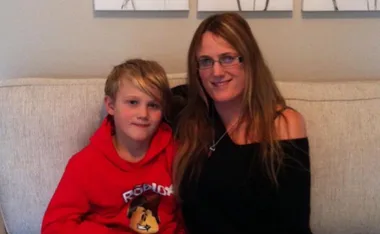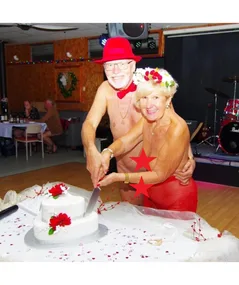A few hundred years ago, you needed a fortune to fill your larder with spices. They were brought by sailing ship from the “spice islands”, and tasted of adventure and luxury.
These days cinnamon, allspice, nutmeg, etc, can be bought for a few dollars at the supermarket: tired, elderly spices months or, more likely, years old, with most of the richness of their fragrance lost.
You only realise how truly stunning spices are when you smell them freshly picked. And luckily many spices are easy to grow in your backyard or in a pot on your patio or sunny windowsill.
The spice to end all spices is probably the allspice tree (Pimenta officinalis) that smells and tastes deliciously like a blend of cinnamon, cloves and nutmeg. The brown powdered spice you buy in the supermarkets is usually the powdered leaves, but you can also buy the fragrant dried berries too, either whole or in powdered form.
Allspice is a giant evergreen tree from the rainforests of Central America, but luckily you don’t need a rainforest — or even a giant frost-free garden — to grow it. For home use it’s probably best in a big pot, where it’ll grow to about 1.5m. It likes a semi-shaded spot, and lots of warmth and moisture — it’s perfect for a patio. I’ve also grown one in a smaller pot in our sunny living room, though admittedly a small pot plant only gives you a dozen or so leaves to pick each year, unless you want to turn the poor plant bald.
If you do live in a frost-free climate though, with rich deep soil and a shady spot, do plant it outdoors. It’ll eventually grow to about 12m — and the fragrance will be stunning. You need male and female plants for the small white flowers to set fruit, but the leaves themselves are quite fragrant enough not to worry about the berries.
I usually use the leaves fresh, either lining a cake tin with them, or adding a leaf to custards. But they can also be dried and crumbled, and stored in a sealed container, to use like you’d use the powder from a supermarket.
You probably won’t find allspice trees for sale in your local nursery, unless they specialise in herbs and spices, but if you use a search engine to look up “allspice trees” on the Internet you’ll find at least one and probably several places that will sell them by mail order.
If you don’t feel ambitious enough for an allspice tree you can make your own “spiced sugar” with dianthus flowers.
Dianthus are low-growing perennials, forming a mat about 30cm wide after a few years, with masses of small bright stunningly scented flowers. They love sun and heat, and tolerate dry soil as long as they’re given a good watering every fortnight or so.
Many of the modern cultivars have been bred for looks rather than scent, big showy multi-coloured beauties, but nearly all still have got loads of perfume. The most strongly fragrant though are the old-fashioned “pinks” — so called either because they used to only come in shades of pink, white and mauve, or from the “pinked” edges of their petals — looking like they had been trimmed with pinking shears.
If you’re planting dianthus now or in summer in very hot areas, I’d give them some shelter with shadecloth for a few months ’til they are well established. Otherwise just give them plenty of space. The two things dianthus really hate are being crowded out by taller plants and deep shade.
To use them in cooking, pick the flowers in the early morning, dry them on a few sheets of newspaper ’til they feel crisp, then layer them in a container of caster sugar ’til the sugar is strongly perfumed. Check regularly to make sure they don’t go mouldy — the flowers must bedrybefore they’re added to the sugar, or you’ll end up with a soggy and possibly fermenting mess.
Dianthus’s close relative, sweet william, are just as strongly perfumed, and give a much more dramatic display all through the heat of summer. While I’ve never used them in cooking (and don’t intend to; you need to beverysure that any flowers that come near food are safe) they do give your garden an almost ethereal fragrance, strong enough to waft indoors as well. There is nothing like great big bowls full of sweet william flowers to fill your house with perfume.
The punnets of small or dwarf sweet williams are usually annuals; you plant them and they flower a few months later. The gorgeous giant ones are biennials — first-year foliage only and then masses of flowers in their second. They can grow up to a metre high, and the scent will knock your socks off — and the stockings off anyone passing by, too. For these true stunners you’ll need to look for packets of seed; nurseries very rarely stock them, as they take so long to bloom.
All dianthus grow best with fertile soil and regular watering, mulch and a scattering of fertiliser every three weeks to encourage them to keep blooming. If their growth is too lush, you may need to stake them.
But as a reward you’ll get armfuls of the most extraordinary blooms, with a true scent of paradise. They’re one of the most wonderful things I know to bring as a gift to any friend or someone who needs cheering up.
Sweet williams are one of those old-fashioned blooms that you’ll never find in florists. And once you’ve known their fragrance — or the scent of home-grown allspice — you’ll find it hard to settle for the pale scents of commercial products again.
Your say: What is your favourite spice? Share with us below…
Newsletter conversion description. Get the latest in your inbox.



.png?resize=380%2C285)
.jpg?resize=380%2C285)




.png?resize=380%2C285)




























.jpg?resize=380%2C285)






















